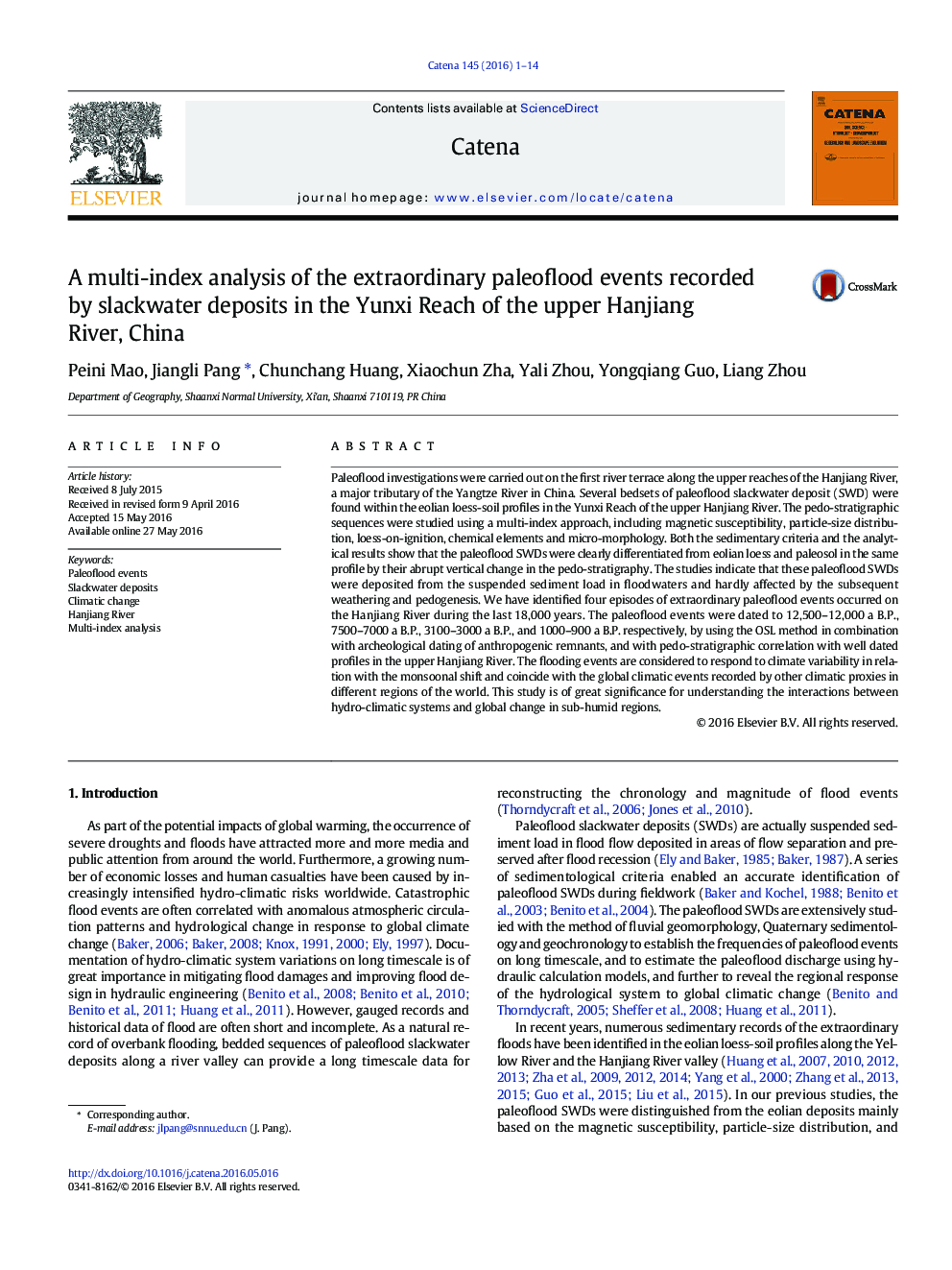| Article ID | Journal | Published Year | Pages | File Type |
|---|---|---|---|---|
| 4570877 | CATENA | 2016 | 14 Pages |
•Late Pleistocene and Holocene paleoflood events were identified in the Hanjiang River.•Paleoflood slackwater deposits were found inserted into eolian loess-soil sequences.•Paleoflood slackwater deposits were identified using a multi-index approach.•Paleoflood events were dated to 12,500–12,000, 7500–7000, 3100–3000, 1000–900 a B.P.•These flood events are sensitive to climatic variability in Chinese monsoon zone.
Paleoflood investigations were carried out on the first river terrace along the upper reaches of the Hanjiang River, a major tributary of the Yangtze River in China. Several bedsets of paleoflood slackwater deposit (SWD) were found within the eolian loess-soil profiles in the Yunxi Reach of the upper Hanjiang River. The pedo-stratigraphic sequences were studied using a multi-index approach, including magnetic susceptibility, particle-size distribution, loess-on-ignition, chemical elements and micro-morphology. Both the sedimentary criteria and the analytical results show that the paleoflood SWDs were clearly differentiated from eolian loess and paleosol in the same profile by their abrupt vertical change in the pedo-stratigraphy. The studies indicate that these paleoflood SWDs were deposited from the suspended sediment load in floodwaters and hardly affected by the subsequent weathering and pedogenesis. We have identified four episodes of extraordinary paleoflood events occurred on the Hanjiang River during the last 18,000 years. The paleoflood events were dated to 12,500–12,000 a B.P., 7500–7000 a B.P., 3100–3000 a B.P., and 1000–900 a B.P. respectively, by using the OSL method in combination with archeological dating of anthropogenic remnants, and with pedo-stratigraphic correlation with well dated profiles in the upper Hanjiang River. The flooding events are considered to respond to climate variability in relation with the monsoonal shift and coincide with the global climatic events recorded by other climatic proxies in different regions of the world. This study is of great significance for understanding the interactions between hydro-climatic systems and global change in sub-humid regions.
